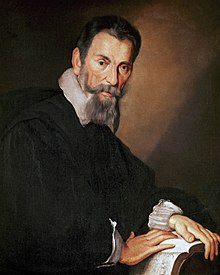Utente:Lohengrin-co/Sandbox
Storia[modifica | modifica wikitesto]
Contesto e prime esecuzioni[modifica | modifica wikitesto]
Dopo gli esordi fiorentini e le apparizioni a Roma, Mantova e in altre città padane, nel carnevale del 1637 l'opera approda a Venezia con l'esecuzione al Teatro San Cassiano dell'Andromeda di Francesco Manelli su testo di Benedetto Ferrari. Questo nuovo genere di rappresentazione teatrale interamente cantata assunse allora per la prima volta le caratteristiche di uno spettacolo pubblico, di divertimento a pagamento, e non più di spettacolo di corte o con ingresso a inviti come sino ad allora era stato. Questa nuova moda non tardò ad attecchire nella città lagunare: l'anno successivo nello stesso teatro fu rappresentata La maga fulminata degli stessi Manelli-Ferrari. poi negli anni successivi aprirono altri teatri come il Teatro del SS. Giovanni e Paolo (inaugurato nel 1639 con La Delia di Francesco Manelli su libretto di Giulio Strozzi) e il Teatro San Moisè
Monteverdi was an established court composer in the service of Duke Vincenzo Gonzaga in Mantua when he wrote his first operas, L'Orfeo and L'Arianna, in the years 1606–08.[1] After falling out with Vincenzo's successor, Duke Francesco Gonzaga, Monteverdi moved to Venice in 1613 and became director of music at St Mark's Basilica, a position he held for the rest of his life.[2] Alongside his steady output of madrigals and church music, Monteverdi continued to compose works for the stage, though not actual operas. He wrote several ballets and, for the Venice carnival of 1624–25, Il combattimento di Tancredi e Clorinda ("The Battle of Tancred and Clorinda"), a hybrid work with some characteristics of ballet, opera and oratorio.[3]Template:Refn

In 1637 fully-fledged opera came to Venice with the opening of the Teatro San Cassiano. Sponsored by the wealthy Tron family, this theatre was the first in the world specifically devoted to opera.[4] The theatre's inaugural performance, on 6 March 1637, was L'Andromeda by Francesco Manelli and Benedetto Ferrari. This work was received with great enthusiasm, as was the same pair's La Maga fulminata the following year. In rapid succession three more opera houses opened in the city, as the ruling families of the Republic sought to express their wealth and status by investing in the new musical fashion.[4] At first, Monteverdi remained aloof from these activities, perhaps on account of his age (he was over 70), or perhaps through the dignity of his office as maestro di capella at St. Mark's. Nevertheless, an unidentified contemporary, commenting on Monteverdi's silence, opined that the maestro might yet produce an opera for Venice: "God willing, one of these nights he too will step onto the stage."[5] This remark proved prescient; Monteverdi's first public contribution to Venetian opera came in the 1639–40 carnival season, a revival of his L'Arianna at the Teatro San Moisè.[6]Template:Refn
L'Arianna was followed in rapid succession by three brand new Monteverdi operas, of which Il ritorno was the first.[7] The second, Le nozze d' Enea in Lavinia ("The Marriage of Aeneas to Lavinia"), was performed during the 1640–41 carnival; Monteverdi's music is lost, but a copy of the libretto, of unknown authorship, survives. The last of the three, written for the 1642–43 carnival, was L'incoronazione di Poppea ("The Coronation of Poppea"), performed shortly before the composer's death in 1643.[6][8]
- ^ Carter (2002), pp. 1–2
- ^ Neef, p. 324
- ^ Tim Carter, Monteverdi, Claudio: Venice, su oxfordmusiconline.com, Oxford Music Online, 2007. URL consultato il 7 February 2010. Template:Subscription
- ^ a b Ringer, pp. 130–31
- ^ Rosand (1991), pp. 15–16
- ^ a b Errore nelle note: Errore nell'uso del marcatore
<ref>: non è stato indicato alcun testo per il marcatoreR135 - ^ Ringer, pp. 137–38
- ^ Carter (2002), p. 305